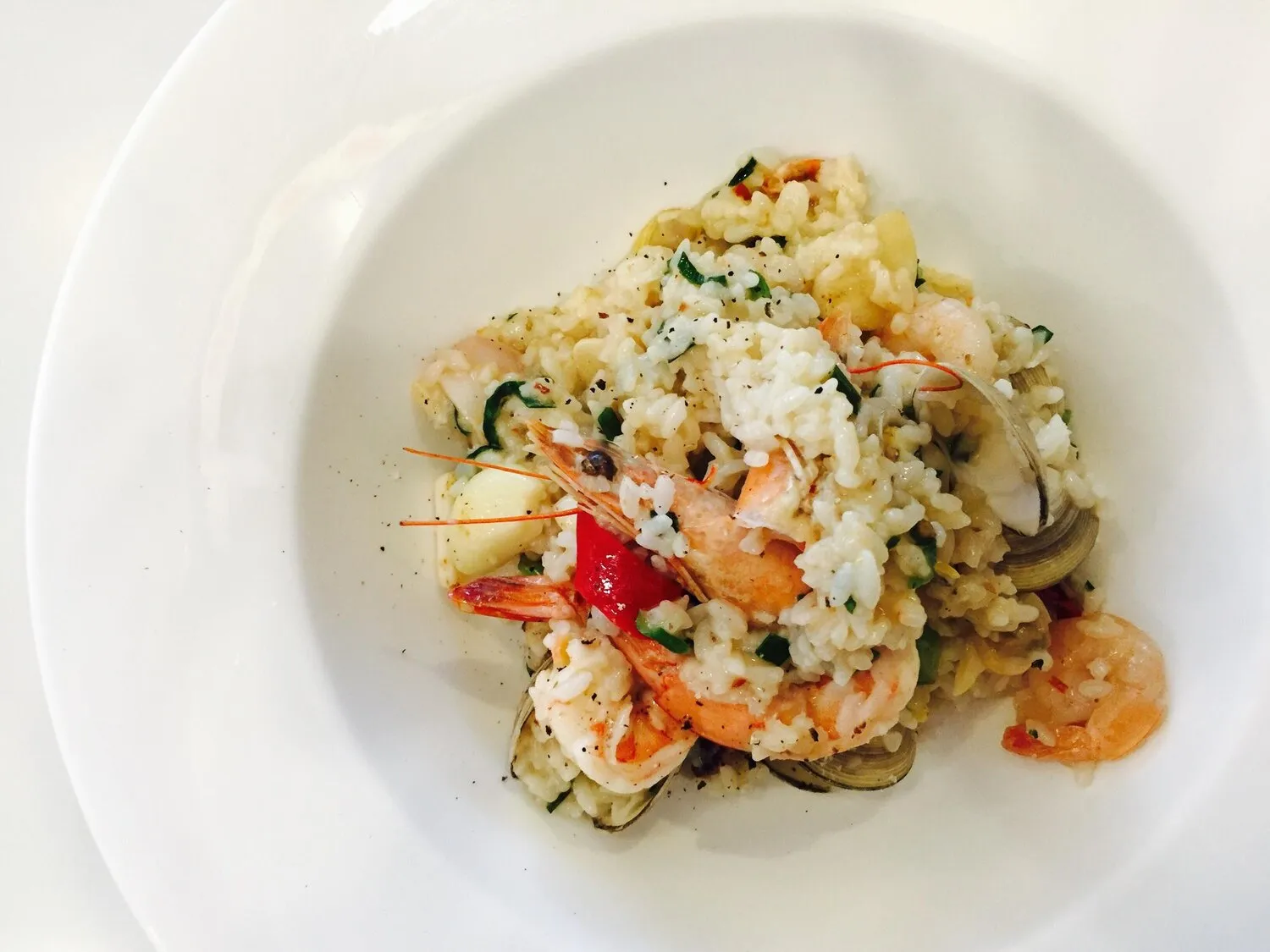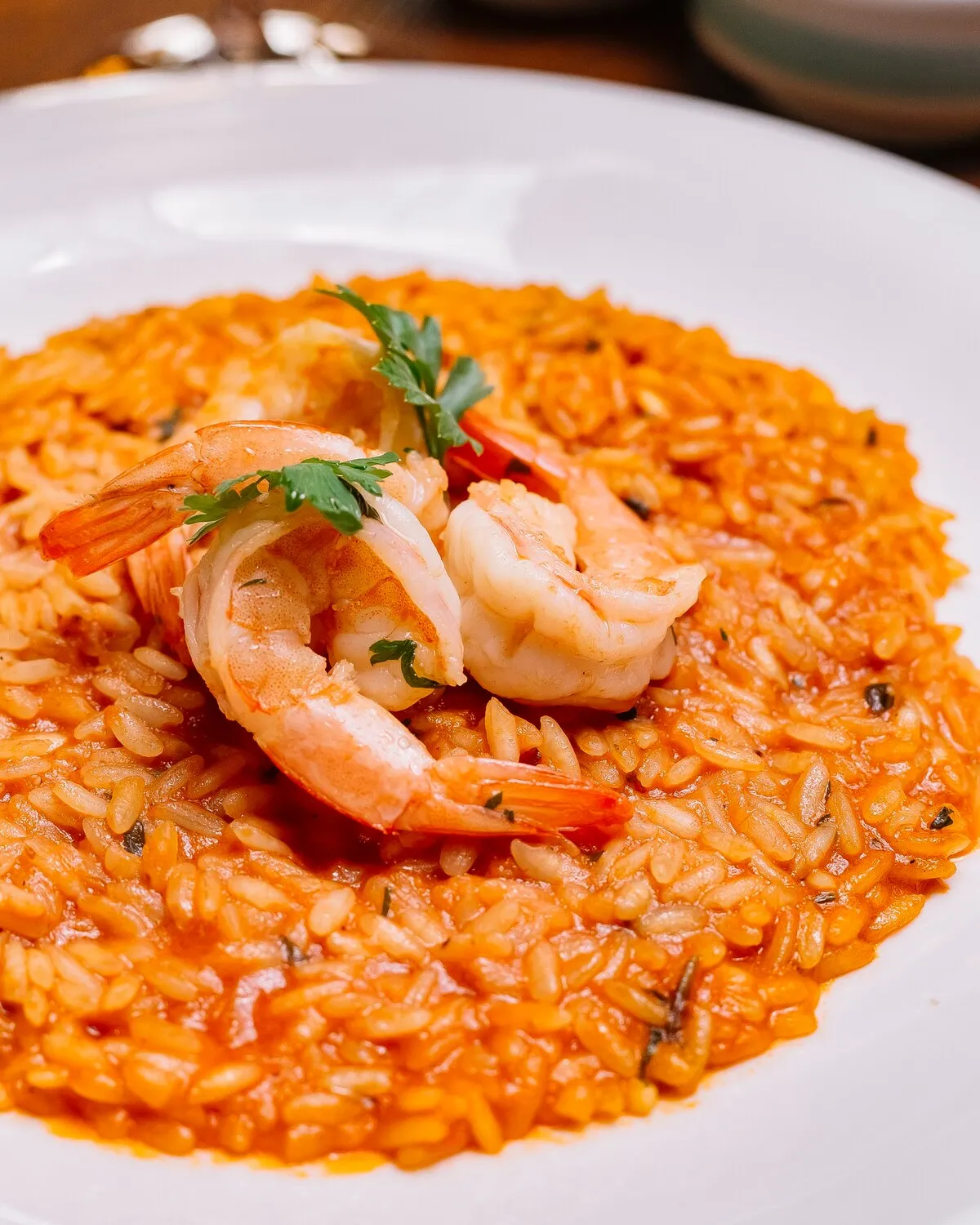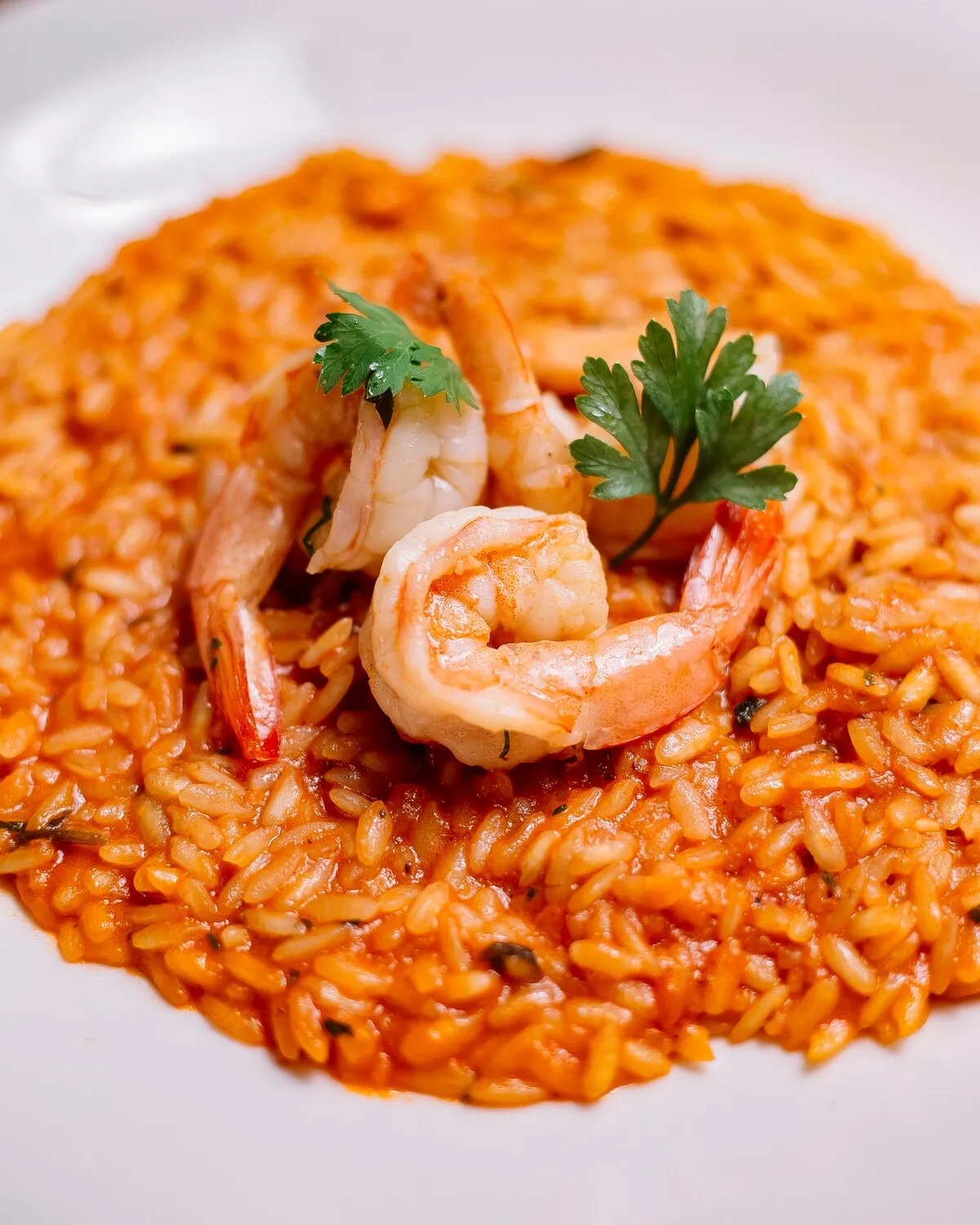
Risotto de Limão Siciliano com Camarões
Lemon Risotto with Shrimp.
Nutrition Facts
* The % Daily Value (DV) tells you how much a nutrient in a serving of food contributes to a daily diet. 2,000 calories a day is used for general nutrition advice.
Risotto, a creamy rice dish, has its roots in Northern Italy, specifically in the Lombardy region, where short-grain rice cultivation flourished due to the favorable climate and irrigation systems. The addition of seafood like shrimp reflects the coastal influences of Italian cuisine. Lemon, while used throughout Italy, is particularly prominent in Southern Italy, suggesting a fusion of regional ingredients and culinary techniques over time.
Risotto, while not always considered a 'fancy' dish, holds a significant place in Italian culinary culture. It's often enjoyed as a primo (first course) and is a testament to using simple, high-quality ingredients to create a comforting and flavorful meal. The inclusion of seafood elevates it, making it suitable for special occasions or gatherings.
Regional Variations
While this particular variation combines lemon and shrimp, risotto can be adapted to countless regional ingredients and flavors. Each region in Italy boasts its own unique risotto recipes, showcasing the diversity of Italian cuisine.
Slow Food Movement
The art of making risotto, with its slow cooking and constant stirring, aligns with the principles of the Slow Food movement, which emphasizes the importance of preserving traditional cooking methods and using locally sourced ingredients.
Family Gatherings
Risotto is often prepared for family meals and celebrations, symbolizing togetherness and the sharing of a comforting and satisfying dish.
The dish is characterized by a bright and zesty flavor profile, balanced by the richness of the risotto and the savory sweetness of the shrimp.
The primary flavor is the vibrant acidity and aroma of Sicilian lemons, which permeate the creamy rice. The shrimp provide a delicate sweetness and umami, while the risotto itself offers a comforting richness from the butter, Parmesan cheese, and starchy Arborio rice. White wine adds a subtle complexity and acidity that complements the lemon. Aromatics like garlic and shallots provide a savory foundation, and fresh herbs like parsley or basil contribute freshness.
Rice Selection
Use Arborio or Carnaroli rice for the best risotto texture. These varieties have a high starch content, which is essential for creating the creamy consistency.
Warm Stock
Keep the stock warm throughout the cooking process. Adding cold stock will lower the temperature of the rice and can result in uneven cooking.
Gentle Stirring
Stir the risotto frequently but gently. Avoid over-stirring, which can make the risotto gummy. The goal is to release the starch gradually.
Lemon Zest vs. Juice
Use both lemon zest and juice. The zest provides the aromatic oils, while the juice adds the acidity. Add the zest towards the beginning of cooking to infuse the rice with flavor and the juice at the end to preserve its brightness.
Shrimp Preparation
Don't overcook the shrimp. Cook them separately and add them towards the end of the risotto cooking time to prevent them from becoming rubbery.
Explore additional Risotto dishes and restaurants
Explore RisottoDiscover top dining spots and culinary experiences in Búzios.
Explore BúziosLearn more about the food culture, restaurant scene, and culinary heritage of Brazil.
Explore Brazil

